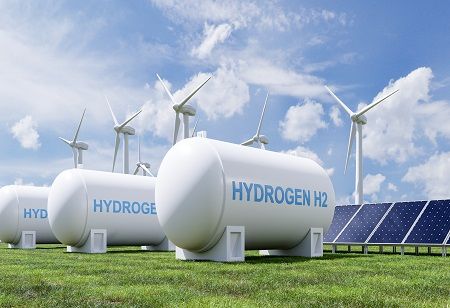
As the global community rallies around the goal of achieving net-zero carbon emissions by 2050, green hydrogen has become a critical pillar in decarbonization strategies. According to the International Renewable Energy Agency (IRENA), hydrogen could meet up to 12% of global energy demand by 2050, with green hydrogen accounting for the bulk of this. The European Union, one of the leading regions in promoting hydrogen, aims to produce 10 million tonnes of renewable hydrogen by 2030 as part of its ambitious Green Deal. This commitment is echoed by countries like Japan, which has long viewed hydrogen as a cornerstone of its future energy policy, and the United States, which allocated $9.5 billion to hydrogen development under the Infrastructure Investment and Jobs Act.
Green hydrogen’s unique value proposition lies in its ability to decarbonize sectors that are difficult to electrify, often referred to as “hard-to-abate” sectors. These include heavy industry, transportation, and energy storage, where the limitations of batteries and direct electrification are significant.
In transportation, green hydrogen is already being touted as a solution for decarbonizing heavy-duty vehicles such as trucks, buses, ships, and airplanes. Hydrogen fuel cells, which convert hydrogen into electricity to power vehicles, offer an advantage over batteries due to their fast refueling times and longer ranges.
Germany launched the world’s first hydrogen-powered train in 2018, and hydrogen buses are becoming increasingly common in cities across Europe and Asia. The International Energy Agency (IEA) estimates that by 2030, there could be 15 million hydrogen fuel cell vehicles on the road globally, significantly reducing carbon emissions from the transportation sector.
"Climate change is the main reason for species loss and a powerful answer to it is decarbonization," Rinika Grover, Head of Sustainability & CSR, Apollo Tyres.
Green hydrogen can also play a transformative role in industries such as steel, cement, and chemicals, where processes require high heat or involve chemical reactions that are challenging to decarbonize with electricity alone. In steelmaking, for instance, green hydrogen is being used to replace carbon-intensive coke in the production of iron.
Swedish steelmaker SSAB, together with energy company Vattenfall and mining firm LKAB, launched the HYBRIT project, which produced the world's first "fossil-free" steel using hydrogen in 2021. This breakthrough has the potential to eliminate 7% of global CO2 emissions currently attributed to the steel industry.
"Green hydrogen made with renewable power will have a role to play as an aviation fuel and as a substitute for natural gas," Matthias Rebellius, AG Managing Board Member, Siemens & CEO of Siemens Smart Infrastructure.
Renewable energy sources like solar and wind are inherently intermittent, creating a need for large-scale storage solutions to balance supply and demand. Green hydrogen offers a way to store excess renewable energy in the form of hydrogen, which can later be converted back to electricity using fuel cells or burned directly in turbines. This could enable countries to transition to 100% renewable grids while maintaining a stable energy supply.
In the Netherlands, the Port of Rotterdam is planning to become a green hydrogen hub for Europe, with large-scale electrolyzer plants set to produce green hydrogen using offshore wind power. Such initiatives demonstrate hydrogen’s potential to serve as a bridge between renewable energy production and consumption. "In a world grappling with surging power needs, energy storage solutions are now vital for resilience and efficiency,"Pradeep Panwar, Co-Founder & CSO, Neoenerg.
Several projects around the world are already showcasing the potential of green hydrogen. In Australia, the Hydrogen Energy Supply Chain (HESC) project is producing green hydrogen for export to Japan, aiming to tap into Japan’s growing demand for clean energy.
In Chile, the government is leveraging its abundant solar energy to produce low-cost green hydrogen, with the goal of becoming one of the world’s top hydrogen exporters. Chile’s National Green Hydrogen Strategy estimates that by 2050, hydrogen exports could generate $30 billion in revenue annually, rivaling the country’s copper industry.
Green hydrogen holds the promise of revolutionizing how the world produces, stores, and consumes energy. Its ability to decarbonize hard-to-abate sectors, coupled with growing political and financial support, places it at the forefront of the global energy transition. As costs decline and infrastructure develops, green hydrogen is poised to become a cornerstone of a sustainable, low-carbon economy.
While challenges remain, the momentum behind green hydrogen is undeniable. Its rise represents not just a technological shift but a critical step towards a more sustainable and resilient energy future. The world’s pursuit of decarbonization may well hinge on the successful deployment of green hydrogen at scale.
We use cookies to ensure you get the best experience on our website. Read more...